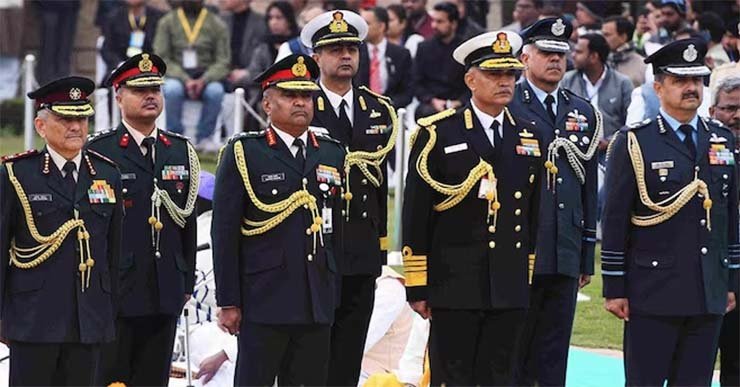
New Delhi: Taking note of a rapidly evolving security landscape, India’s efforts to establish theatre commands to streamline military operations, enhance coordination and efficiency to build an integrated war-fighting machinery in a cost-effective manner has gathered momentum.
A “consensus” has been reached among the Indian Army, Navy, and Air Force regarding the plan after addressing various concerns. The revised proposal entails the establishment of three integrated theatre commands, each led by a senior three-star general (Lieutenant Generals, Air Marshals, or Vice Admirals).
These commands will be responsible for managing the northern borders with China, the western front with Pakistan, and a maritime command in peninsular India, a media outlet quoted top defense sources.
Considering the Indian Air Force (IAF) argument against a standalone ADC, the original proposal for an Air Defence Command (ADC) has been discarded. According to IAF, standalone ADC was “counterproductive” since “air defence” and “offensive air” missions are interdependent and cannot be carried out in isolation during conflicts. Additionally, IAF argued that dividing the “limited air assets” among different theatre commands would be operationally unwise. The IAF currently possesses just 31 fighter squadrons, despite being authorised for 42.
“All three services are now onboard with the theatre commands. Air assets, for instance, will not be owned by a theatre command but will shift from one to another based on the contingency faced,” a source told the media outlet.
A “bottom-up” approach has been initiated to foster collaboration and a sense of working together among the Army, Navy, and IAF. A group of 102 officers in the rank of Majors and Lieutenant Colonels, comprising 40 from the Army, 32 from the IAF, and 30 from the Navy, have recently been “cross-posted” to other services. This cross-staffing initiative is aimed at areas of commonality, such as equipment like UAVs and the BRAHMOS supersonic cruise missiles.
Additionally, steps are being taken to introduce “common annual confidential reports” for all two and three-star generals across the armed forces. This move aims to synergise the appraisal system for tri-Service appointments.
Currently, India has two unified commands: the Andaman and Nicobar Command, which is geographical, and the Strategic Forces Command, which is functional and handles the country’s nuclear arsenal. In contrast, there are 17 single-Service commands (Army and IAF – 7 each and Navy 3).








